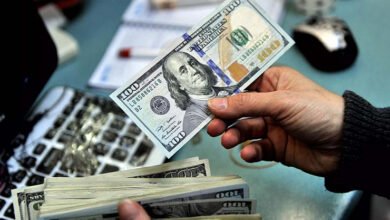CAD accounted incorrect due to statistical blunder of PBS: report
A statistical blunder of PBS was spotted in reporting petroleum imports and the inclusion of COVID-19 vaccines as imports

A statistical blunder of the Pakistan Board of Statistics (PBS) was spotted in reporting petroleum imports and the inclusion of COVID-19 vaccines as imports which led to the incorrect accounting of the current account deficit (CAD).
Analysts and economists have surprised over the reported $1.9 billion current account deficit (CAD) in November as people were expecting the figure to be around $3 billion based on the PBS goods trade deficit that stood at $3.7 billion.
The difference of trade deficit between PBS ($20.6bn) and State Bank of Pakistan (SBP) ($17.6bn) is $3 billion and the difference basically comes from goods imports for Jul-Nov of $3.1 billion for 5MFY22 that basically came from goods imports for Jul-Nov of $3.1 billion. Part of the difference is normal as whenever imports grow, the PBS and SBP datasets register a lag, Business Recorder reported.
A statistical blunder of the Pakistan Board of Statistics (PBS) was spotted in reporting of petroleum imports which is partially widening the gap. According to the report, the deficit will normalise over the coming months with the deficit reported by PBS coming down.
The %7.9 billion import number reported by PBS had shocked the analysts and economists as it was hard to digest. Markets took pounding with money markets rates going up, currency depreciating, and stocks moving in red.
The detailed data (PBS) baffled sane analysts by seeing Pakistan imported 2.8 million tons (MT) of petroleum products and crude in Nov which is simply not possible. OCAC (Oil Companies Advisory Council) data which feeds PBS data showed imports of 1.8 million tons. OCAC number seems to be correct based on the country’s annual imports which stood at 15 MT in 2020 and 18.5 MT in 2019.
Proposal to Demote PSX, Current Account Deficit Rose In May
The question is what made PBS report higher imports that translated to an unexplained import bill of $500 million in the PBS number. Federal government authorities owe the market an explanation.
Markets are confused over another element as the vaccine imports, which is a combination of grants and loans, reported under the sub-head of medicinal products within agriculture and other chemicals group.
In PBS, the number is $688 million (5MFY22: $2.1bn) versus SBP that report this at $75 million (5MFY22: $330mn). The difference for 5MFY22 is $1.8 billion and that number is perhaps parked in SBP’s data of other imports which stood at $2.4 billion (versus $792 million same period last year).
The counter accounting entry of grants is either in the balance of secondary income (within current account) or capital accounts (below the line). And the portion of the debt (lion’s share) is in government debt in the financial account of the balance of payment.
There are numerous other items where marginal imports in PBS data are higher than SBP, and history suggests these will balance out in the months to come – especially in June and December where the books are balanced. SBP data is based on cash (payment basis) while PBS is based on actual imports. There is usually a lag and that balances out. The message for readers is to not read too much into these numbers.
The good thing is that the current account is not as bad as many might believe. Nonetheless, it stood at a deficit of $7.1 billion (annualized GDP of 5.1%) in July-Nov against a surplus of $1.9 billion in the same period last year. Imports stood at $29.9 billion in 5MFY21 and $6.4 billion in November 2021.
The elephant in the room is petroleum imports- up 106 per cent to $7.1 billion (SBP) and 112 per cent to $8.4 billion (PBS). This is for the cumulative Jul-Nov period. For Nov, SBP data stood at $1.6 billion – up 8 per cent from Oct. Here PBS is clearly overstating the volumes. The monthly number is up 36 per cent to $2.2 billion. PBS showed quantitative imports of oil at 2.8 MT of petroleum products crude – up 42 per cent from October.
The LNG imports stood at $1.3 billion on SBP data for July-Nov as compared to $1.9 billion on PBS data. Similarly, the difference between PBS and SBP in LPG imports stood at $206 million for July-Nov. The difference of $840 million will be adjusted in months to come.
The report said that the exports are much less dramatic. It added, that the growth is promising – up 29 per cent to $12.3 billion (SBP) and 27 per cent to $12.3 billion on PBS data in 5MFY22, whereas, the star performer is textile where exports are up 34 per cent to $7.2 billion in July-Nov.






